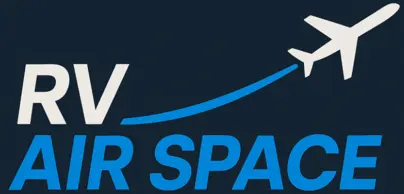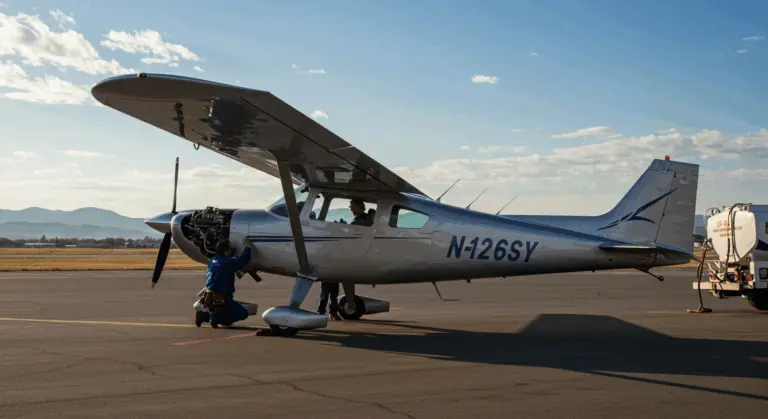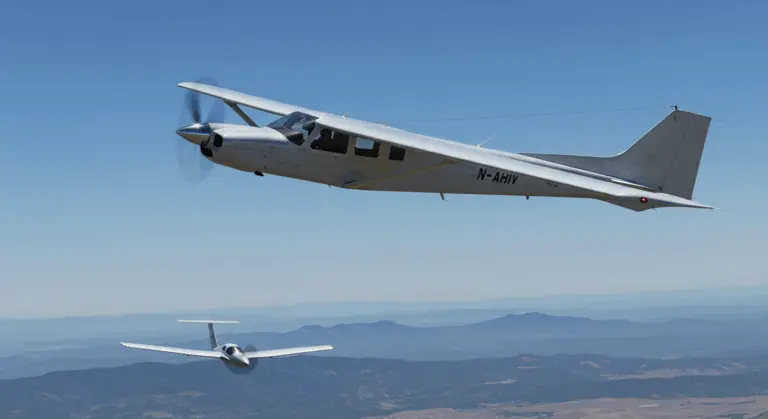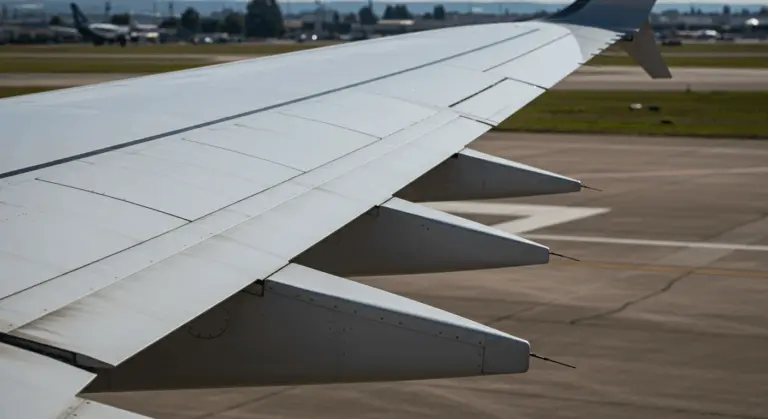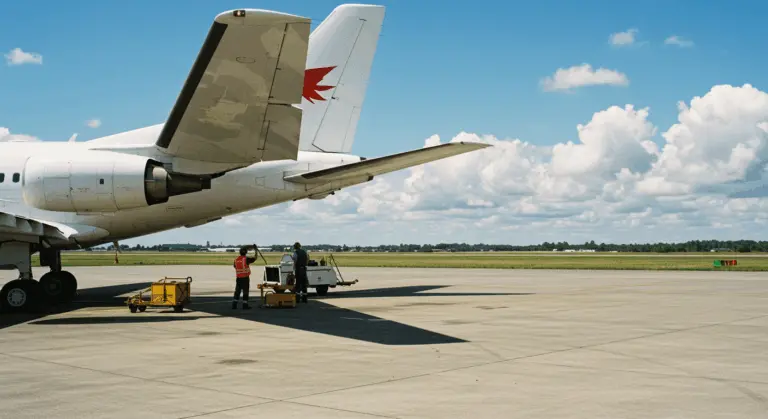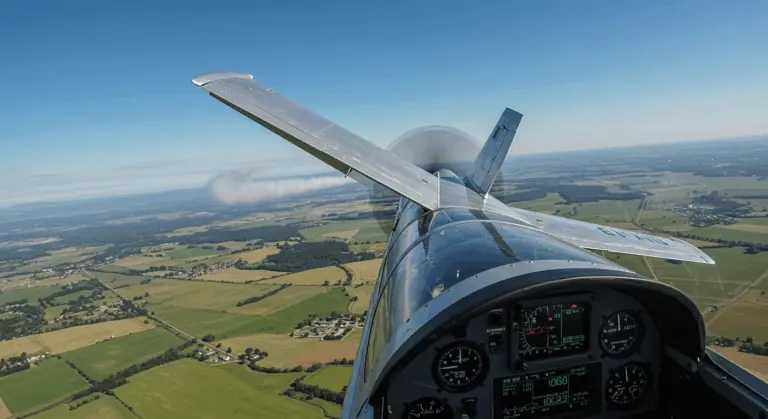What is AOA in Aviation – Understanding Angle of Attack
Definition of Angle of Attack (AOA)
In aviation, the Angle of Attack (AOA or α) represents the angle between an aircraft’s wing chord line and the oncoming airstream—the relative wind that flows over the wing. The chord line serves as an imaginary reference, stretching from the wing’s leading edge to its trailing edge.
AOA reveals precisely how the wing encounters the airstream. This differs from pitch angle—the relationship between the aircraft’s nose and the horizon. While these concepts intertwine, AOA essentially equals pitch angle minus the flight path angle.
Angle of attack defines the angular relationship between a body’s reference line (typically an airfoil’s chord) and the relative wind vector. This fundamental principle extends beyond aircraft wings, governing the aerodynamic behavior of helicopter rotors, propellers, and control surfaces alike.
Understanding AOA is essential—it’s the key factor determining whether aerodynamic surfaces operate efficiently or teeter dangerously close to stall. This AOA-lift relationship forms the very foundation of aerodynamics and flight operations.
Importance of Angle of Attack in Flight
The Angle of Attack is aviation’s most important aerodynamic parameter, fundamentally shaping aircraft performance throughout every flight phase. While pilots routinely monitor airspeed and altitude, AOA alone determines whether an aircraft generates adequate lift or lurches toward a potentially catastrophic stall.
AOA controls the delicate balance between lift production and drag. As AOA climbs from zero, lift increases proportionally—until reaching that critical threshold. This relationship empowers pilots to generate takeoff lift, sustain level flight across varying speeds, and execute precise landing approaches.
AOA monitoring becomes critical for safety. When aircraft approach their critical angle—typically 15–18 degrees for most general aviation models—smooth airflow begins separating from the wing’s upper surface.
AOA control also affects performance optimization. Commercial airlines operate at meticulously calculated AOA values to maximize fuel efficiency during cruise. Fighter pilots exploit precise AOA control during combat maneuvers, extracting every ounce of performance from their machines.
Modern aviation emphasizes AOA awareness through specialized instruments and comprehensive training programs. This emphasis has dramatically reduced stall-related accidents during critical phases like takeoff and landing.
Critical Angle of Attack – What You Need to Know
The critical angle of attack represents aviation’s most crucial safety threshold—the precise point where a wing achieves maximum lift coefficient before aerodynamic stall occurs. Exceed this boundary, and the smooth airflow that normally hugs the wing’s upper surface breaks away, triggering sudden lift loss and dramatic drag increase.
Most subsonic airfoils reach their critical angle between 8 and 20 degrees relative to oncoming airflow. General aviation aircraft typically encounter this threshold around 15 degrees, though this varies considerably.
A key safety principle: stalls are aerodynamic events tied exclusively to AOA, not airspeed. They can occur in any flight attitude, at any speed, if the critical angle is breached.
This explains why aircraft can stall during high-g maneuvers—steep turns or aggressive pull-ups—where excessive back pressure drives AOA beyond its critical limit despite high airspeed.
Recognizing the approach to critical AOA through aircraft behavior becomes crucial. Buffeting, control softening, or stick shaker activation in equipped aircraft provide vital warnings.
How AOA Indicators Enhance Safety
AOA indicators are among modern aviation’s most important safety advances, delivering direct visual feedback about an aircraft’s aerodynamic state. These sophisticated instruments display real-time angles between the wing’s chord line and relative wind—crucial information that traditional airspeed indicators simply cannot provide.
The safety benefits shine brightest during critical flight phases. During takeoff, pilots optimize climb angles to maintain adequate lift while clearing obstacles. In landing phases, AOA information enables precise approach control—especially valuable in short-field or obstacle-rich environments.
AOA indicators are particularly valuable because of there is their ability to provide accurate information regardless of aircraft weight, configuration, or flight conditions. Unlike airspeed indicators—which demand mental calculations and adjustments based on multiple variables—AOA indicators directly measure the parameter determining stall onset.
AOA indicator implementation has significantly reduced stall-spin accidents—historically among general aviation’s deadliest incidents. By providing clear, intuitive feedback about wing aerodynamic state, these systems enhance pilot awareness and aircraft handling skills.
The FAA recognizes these safety benefits by streamlining AOA indicator approval through the Non-Required Safety Enhancing Equipment (NORSE) program. This initiative has democratized access to these life-saving devices across aviation segments—from training aircraft to high-performance models—fostering comprehensive stall awareness and prevention industry-wide.
Factors Affecting Angle of Attack
Several factors influence the angle of attack, which pilots must manage for safe and efficient flight:
-
Aircraft Configuration: Extending flaps or deploying spoilers transforms wing geometry, demanding AOA adjustments. Aircraft weight and center of gravity prove equally critical—heavier aircraft require higher AOA for equivalent airspeed.
-
Environmental Conditions: Wind shear and turbulence trigger rapid, unpredictable relative wind changes. Air density variations, influenced by temperature and altitude, alter the AOA needed for adequate lift generation.
-
Pilot Inputs: Control movements directly manipulate AOA. However, pitch attitude differs from AOA—aircraft can maintain high AOA even with level or nose-down attitudes.
-
Flight Maneuvers: High load factor maneuvers like steep turns demand increased AOA to maintain altitude, effectively raising stall speed. Acceleration and deceleration also influence aircraft pitch and resulting AOA.
Understanding these factors is essential for maintaining safe AOA margins. By recognizing how configuration, environment, control inputs, and maneuvers affect AOA, pilots can anticipate and manage their aircraft’s aerodynamic state—preventing inadvertent stalls while ensuring optimal performance throughout the flight envelope.
Monitoring and Managing Angle of Attack
Effective AOA monitoring and management is fundamental to safe flight operations. Modern aircraft integrate sophisticated systems and proven techniques to help pilots maintain AOA awareness and prevent approaching those critical angles that herald stall conditions.
Advanced flight control systems in contemporary aircraft often feature AOA protection capabilities. Fly-by-wire systems in commercial airliners and sophisticated general aviation aircraft provide haptic feedback through control columns—increasing back pressure as aircraft approach higher angles.
Stick shakers and pushers provide another critical layer of AOA management technology. Stick shakers activate when approaching critical angles, vibrating control columns to alert pilots. Should conditions deteriorate, stick pushers physically move controls forward, reducing AOA before full stalls develop.
AOA management strategies adapt to each flight phase: balancing lift against risk during takeoff, optimizing efficiency in cruise, and maintaining safety margins throughout approach and landing sequences.
Pilot training increasingly emphasizes AOA awareness beyond simple airspeed monitoring. Modern upset prevention and recovery training (UART) programs focus on recognizing AOA trends through aircraft feel, visual cues, and instrument indications.
Conclusion – The Role of AOA in Aviation Safety
Angle of attack is fundamental to aviation safety, directly governing aircraft lift, control authority, and stall characteristics. Effective AOA management is therefore essential across all flight phases.
AOA’s significance in accident prevention is clear. Historical analysis reveals that stall-related accidents—often stemming from critical angle exceedance—remain a leading cause of fatalities in both general and commercial aviation.
Technological solutions like AOA indicators, combined with enhanced training protocols, effectively promote AOA awareness. These tools deliver direct feedback on wing aerodynamic state, offering crucial protection beyond traditional instrument capabilities.
The aviation industry’s AOA management focus shows a shift toward proactive safety measures rather than reactive incident responses. By equipping pilots with knowledge, skills, and tools to maintain appropriate angles of attack, the industry addresses potential problems before they escalate into emergencies.
Continued AOA monitoring technology and training methodology advancements will likely further enhance aviation safety. As aircraft grow more sophisticated, integrating AOA data with other flight parameters will provide increasingly comprehensive protection against aerodynamic stalls and loss of control incidents.
